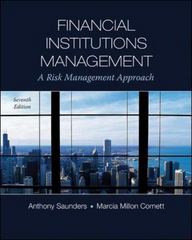

Q3 Sealed-Bid Auctions with Three Bidders There are three risk-neutral bidders with valuations independently drawn from the uniform distribution on (0, 100). Consider a sealed-bid auction for a single object. Each bidder i simul- taneously and independently submits a bid b; for an object. First, consider a standard first-price auction. The bidder with the highest bid gets the object and pays her bid. The losers pay nothing. Assume that all three bidders follow linear bidding strategy of the form bi(vi) = 3 *Vi for all i = 1,2,3 and 0
b2, b > 63) = Prab >b2) * Prab > 63) (b) Determine the Bayesian Nash equilibrium bid functions for all bidders. Compare bid func- tions to the ones we derived in class for a standard first-price auction with two bidders (N = 2). Provide Intuition. (c) Calculate expected revenue from this auction (you will need the lecture slide "Order Statis- tics"). Now, consider a standard second-price auction. The bidder with the highest bid gets the object and pays the second-highest bid. The losers pay nothing. Hint: Review slides 18-22 from the Auction Theory (3a) slide pack to answer parts (d) - (f). Argue that the equilibrium strategies in a second-price auction do not depend on the number of bidders. (d) Determine the equilibrium bid functions for all bidders. Compare bid functions to the ones we derived in class for a standard second-price auction. Provide Intuition. (e) Calculate expected revenue from this auction (you will need the lecture slide "Order Statis- tics"). (f) Compare revenues generates by the first-price auction and the second-price auction. Q3 Sealed-Bid Auctions with Three Bidders There are three risk-neutral bidders with valuations independently drawn from the uniform distribution on (0, 100). Consider a sealed-bid auction for a single object. Each bidder i simul- taneously and independently submits a bid b; for an object. First, consider a standard first-price auction. The bidder with the highest bid gets the object and pays her bid. The losers pay nothing. Assume that all three bidders follow linear bidding strategy of the form bi(vi) = 3 *Vi for all i = 1,2,3 and 0b2, b > 63) = Prab >b2) * Prab > 63) (b) Determine the Bayesian Nash equilibrium bid functions for all bidders. Compare bid func- tions to the ones we derived in class for a standard first-price auction with two bidders (N = 2). Provide Intuition. (c) Calculate expected revenue from this auction (you will need the lecture slide "Order Statis- tics"). Now, consider a standard second-price auction. The bidder with the highest bid gets the object and pays the second-highest bid. The losers pay nothing. Hint: Review slides 18-22 from the Auction Theory (3a) slide pack to answer parts (d) - (f). Argue that the equilibrium strategies in a second-price auction do not depend on the number of bidders. (d) Determine the equilibrium bid functions for all bidders. Compare bid functions to the ones we derived in class for a standard second-price auction. Provide Intuition. (e) Calculate expected revenue from this auction (you will need the lecture slide "Order Statis- tics"). (f) Compare revenues generates by the first-price auction and the second-price auction








